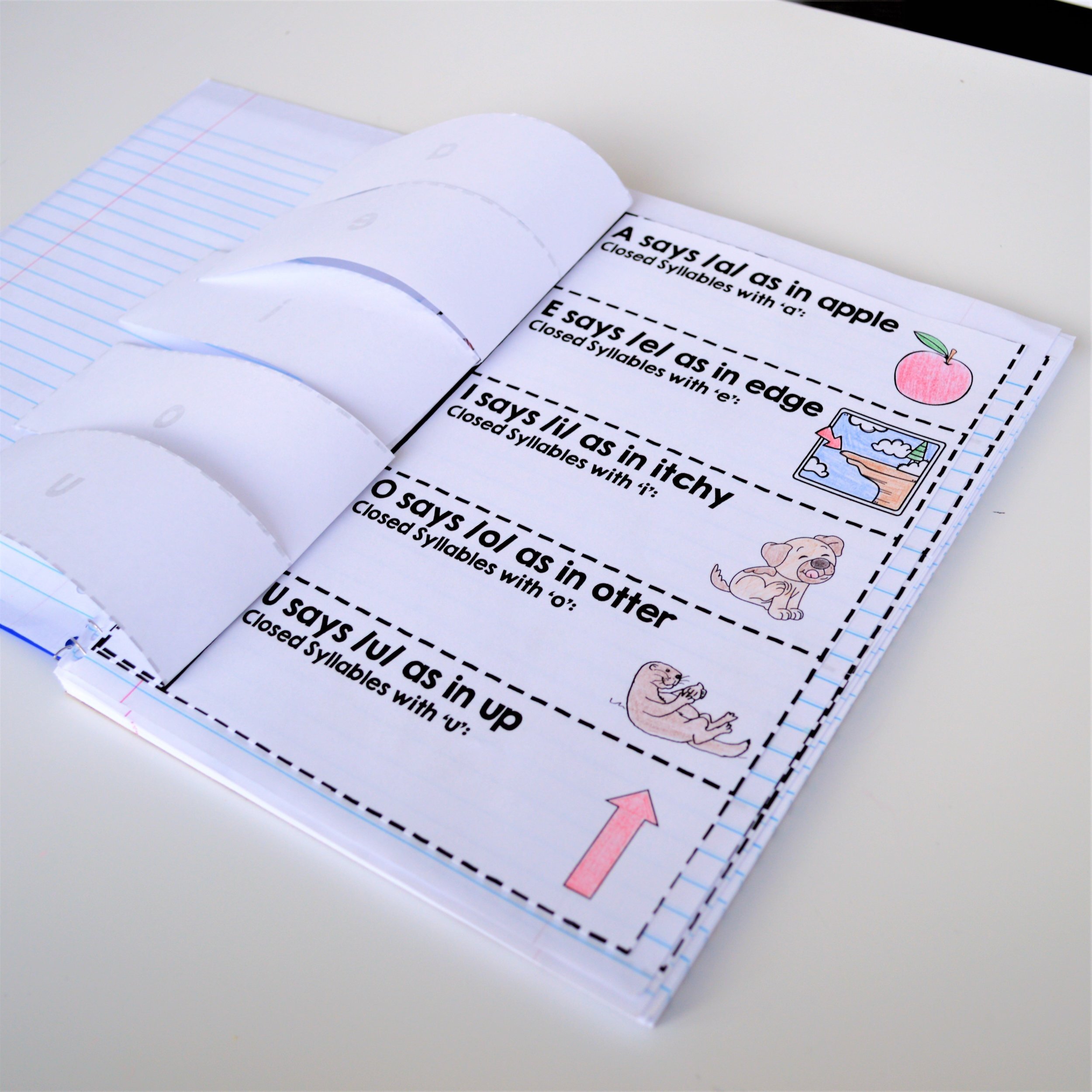Why We Love Interactive Notebooks in Our Reading Intervention
One of our favorite things to do with our students is to create interactive notebooks. We absolutely love it because it is a really great way to start off your systematic, structured, reading intervention. It's also a great way to keep students engaged!
What’s the purpose of an interactive notebook?
Well, here’s the thing, it can be really hard to remember everything we cover in our intervention groups. When you think about it, there is SO MUCH to remember in a structured, systematic literacy program. All the vowel sounds (short, long, and R-controlled) plus all the vowel teams and syllable types.
Whenever we can we try to throw in a visual anchor to help our students hold onto the rule and as a fun way to quiz themselves.
Our students enjoy coloring in the pictures and coming up with words to help them hold onto all these rules. We know that we are often trying to cram so much into our time so we often send these types of activities home as home practice if the students are going to remember to bring back their notebooks!
We know that so many of our students struggle with working memory and this has proven to be a great way to serve as a memory aid while also helping with retention of all the things there is to know related to Orton-Gillingham or Structured & Systematic Literacy.
>>>You can grab this fun syllable type marking activity and interactive notebook by clicking here!<<<
Interactive notebooks can also be a really fun way to engage your younger readers.
We LOVE using this fun consonant and digraph interactive notebook.
It's really important that our young students (thinking specifically about our Pre-Kinder through 1st but keeping in mind this is true for all readers) start off with a strong foundation of letter-sound knowledge to support their early reading efforts. During the early stages of reading instruction, it's so important that we focus on two key aspects.
Often students (especially at-risk students) are going to struggle significantly with their letter sounds. If they cannot look at the letter and then quickly pull up its corresponding sound, they will be unable to decode. A student's working memory cannot support holding onto all the other sounds within the word if it takes longer than a couple of seconds for the student to recognize the letter and its sound.
We set up our interactive notebook as a fun activity to support systematic letter instruction. Usually, we pull in these activities in the order of our instruction. So if we are teaching the letters C and O, we would pull the C and O and work on adding each of those cards to the student notebook.
We set it up so that the student has the opportunity to practice saying the letter sound, writing the letter while saying the letter sound, and coloring a picture of the keyword for the letter sound. You can grab ours by clicking here if you’re interested!
How do you put together an interactive notebook?
Check out our video below to see how we set them up. And, if you love learning strategies that will help you level up your reading intervention, check out our Science of Reading Blueprint. This blueprint will help you understand the 3 key scientific models that drive effective literacy instruction, learn how to integrate the research into practice, and provide simple checklists that will help you weave the science of reading into your instruction.



